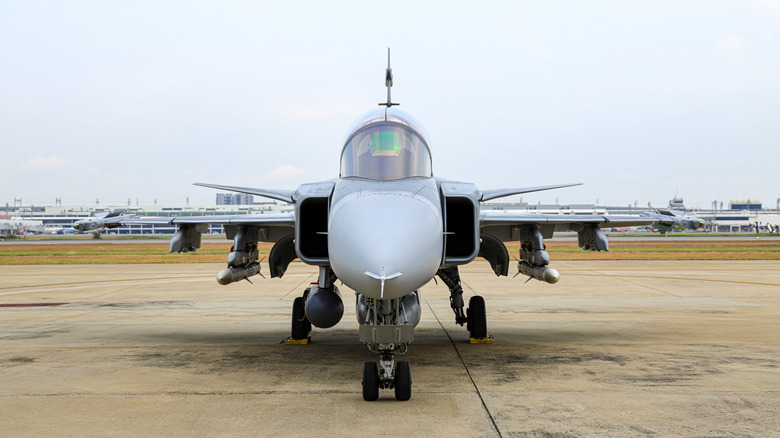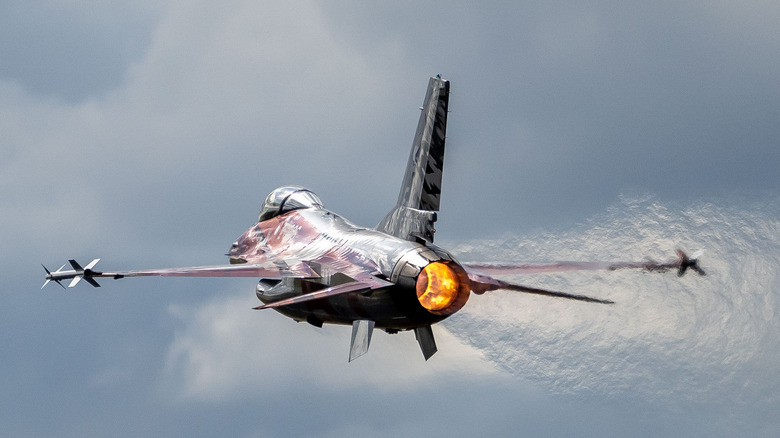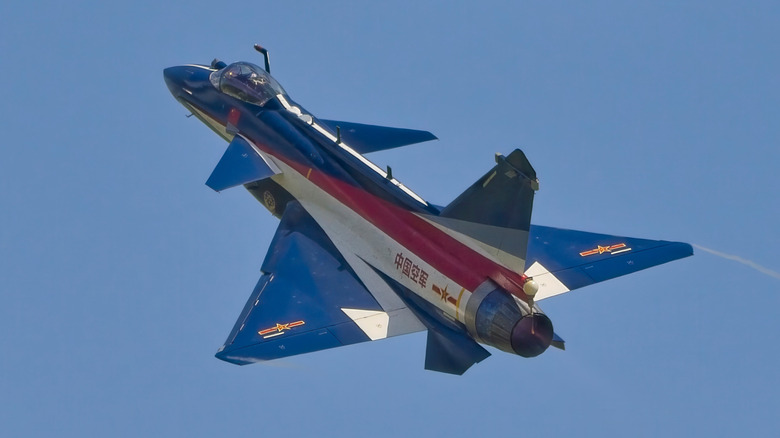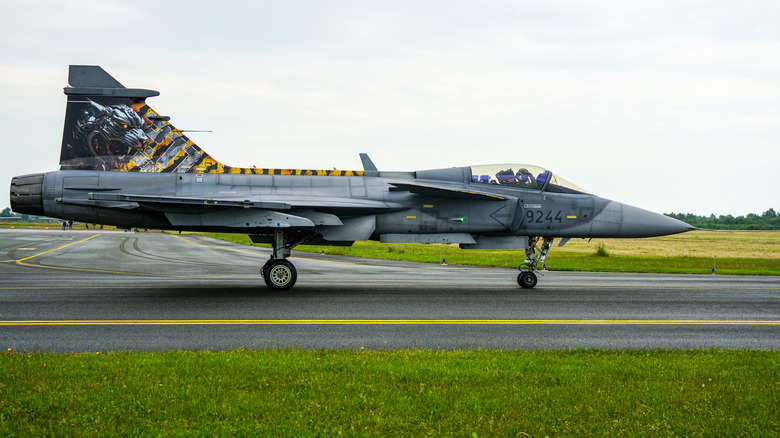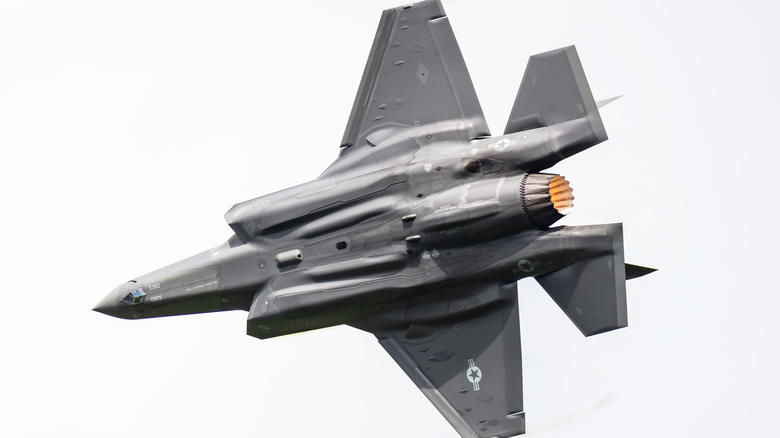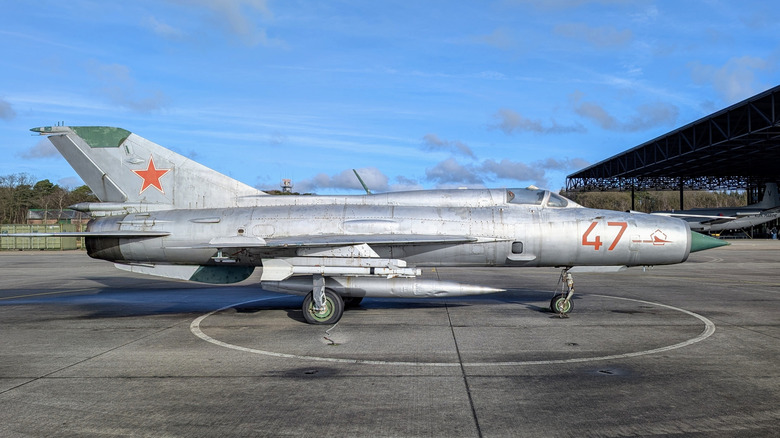5 Of The Fastest Single-Engine Fighter Jets Still Flying Today
Two is one and one is none; This saying speaks volumes about the role of redundant systems within the military. In life-or-death situations such as combat, having a working backup could mean the difference between life and death. In few places is this ethos more prevalent than in aviation. Aeronautical engineers, both military and civil, go to extraordinary lengths to make sure there's always a plan B when designing new aircraft.
The enhanced performance and safety capabilities of multi-engine aircraft make them ideal for military operations. Iconic fighters like the lightning-fast F/A-18 Super Hornet and the cutting-edge F-22 Raptor of the sixth generation achieve remarkable speeds thanks to their dual engine power plants. However, the addition of a second engine comes with significant challenges. While it provides additional power, it also contributes to the aircraft's weight. The inclusion of an extra engine not only boosts power and payload, but also increases drag and weight, necessitating a delicate balance in aircraft design.
That's why the era of the single-engined fighter plane is far from over. A single-engine power plant remains a reliable method of keeping a fighter aircraft agile and maneuverable. Some of the most advanced and respected aircraft in the world achieve remarkable speeds with just a single engine, and many are still in use today.
General Dynamics F-16 Fighting Falcon – 1,500 mph
A multirole fighter, the F-16 Fighting Falcon achieved operational status in the United States Air Force in 1978. While it might be old, this fourth-generation fighter is aging spectacularly. The inaugural F-16A model used a single Pratt & Whitney F100-PW-200 engine, which made 23,830 pounds of thrust in afterburner mode. With a cruising speed of 577 mph, a range of up to 1,407 miles, and an altitude ceiling of 55,000 feet, the Fighting Falcon — later nicknamed the Viper by pilots and crew — exceeded its designers' wildest hopes.
The modern F-16 may be a couple of generations behind the latest and greatest, but it still holds its own, thanks to the gradual improvements it went through. The modern Viper uses 29,000 pounds of thrust on its journey to speeds faster than Mach 2.0 — twice the speed of sound and over 1,500 mph.
The F-16 is not only one of the fastest fighters flying, but it can also compete with and even outperform more recent efforts to build an excellent all-around fighter. The F-16 is a worldwide success with an enviable record, and it doesn't seem like that will change soon: While few nations are capable of building and maintaining sixth-generation fighters, 29 countries operate an estimated 3,100 of the single-engined F-16 speedster.
Chengdu J-10 Vigorous Dragon – 1,450 mph
Fighter aircraft development is a decades-long road, and China first announced its intent to join the top ranks of worldwide air forces with the J-10 Chengdu Vigorous Dragon in 1998. More than a quarter-century later, the J-10's public appearances remain sparse, but we do know certain things about the mysterious fighter.
The latest version of the Vigorous Dragon is the J-10C. It comes equipped with a scanner called active electronically scanned array (AESA) and carries PL-10 infrared homing missiles. The J-10 is used by China's military, but it's also exported to other countries, which is how the plane scored its first victories flying a foreign flag. The latest J-10 uses a WS-10B engine producing over 30,000 pounds of thrust, while thrust-vectoring technology makes the J-10 capable of otherworldly maneuvers at low speeds. As for top speed, China is naturally reticent about sharing this detail, but sources peg it in the 1,400 mph/Mach 1.8 range.
Known as the 'Firebird' by NATO naming nomenclature (we vastly prefer Vigorous Dragon), the plane recently undertook its aerial combat debut when Pakistani J-10s allegedly shot down four Indian aircraft in May 2025, including at least one twin-engined Dassault Rafale. This victory will no doubt make potential buyer and seller nations take notice. The J-10 seems to have arrived, and it might be fighting for bids — and aerial victories — with aircraft like the F-16.
Saab JAS 39 Gripen – 1,500 mph
The Gripen, built by Saab, first took flight in 1988, slowly making its way through development and testing until its debut with the Swedish Air Force in 1997. The modern Gripen E variant made its maiden journey in 2019, and Sweden and Brazil established the first foreign production line for the aircraft in 2023.
While less famous than the F-16 or the J-10, the JAS 39 Gripen is the backbone of Sweden's air defense strategy. Developed during the Cold War, the Swedish Air Base System calls for dispersing air forces around the country and operating from the nation's highway system in case of war. In such scenarios, aircraft like the Gripen would operate from hidden hangars and use ultra-short runways that would be, essentially, sectioned-off highways.
The Gripen E may have been born well after the Cold War, but Saab's design ethos for the plane endures. This plane uses a single GE F414G jet engine, making up to 22,000 pounds of thrust in afterburner. With a maximum takeoff weight of 36,000 pounds, it can get airborne with a 17 by 546 yards-long runway, and can land within 656 yards without external braking forces such as a hook or parachute. Once down, it can rearm within 20 minutes. In high-altitude flight, a properly-equipped Gripen on a speed run can hang with the F-16 and the J-10. Its top speed under ideal conditions can go above Mach 2.0, or around 1,500 mph.
Lockheed Martin F-35 Lightning 2 – 1,200 mph
The F-35 Lightning 2, a marvel of military aviation, is a subject of fascination for enthusiasts and a point of contention for budget experts. While it may not match the raw power of the twin-engined F-22 Raptor, a few unique features and capabilities set it apart.
The Lightning 2's unique abilities revolve around its single engine, a thrust-vectoring Pratt & Whitney F135 that generates 43,000 pounds of thrust for each of the Lightning 2's three variants. The F-35A takes off and lands like a conventional fixed-wing aircraft. The B model is capable of short takeoff/vertical landing (STOL) operations. The F-35C is a maritime asset rigged for catapult takeoffs and tailhook landings on aircraft carriers.
The F-35 has external hardpoints for armament, but it can also carry weapons internally, resulting in a streamlined fuselage. The lack of angles and protrusions reduces the F-35's radar cross-section, keeping it off enemy radar screens. Internal weapon bays reduce drag, helping the F-35 achieve speeds of up to 1,200 mph, or Mach 1.8. It might not be as fast as the Gripen or the F-16, but the versatility of its variants, combined with high performances, gives it a place on this list.
MiG-21 Fishbed – 1,300 mph
The soviet fighter jet MiG-21, named Fishbed by NATO, was born the same year as the Tri-Five Chevy, but it remains active in more than one air force today, and it is still one of the fastest single-engine fighters around. This absolute legend is by far the oldest aircraft on this list, having been built by the Soviet Union in 1955. Essentially an enormous jet engine with wings, it was in production until 1985, with over 10,000 units built.
Some MiG-21s came equipped with a Tumansky R-11F2-300 jet engine that made 13,000 pounds of thrust. While that is not a lot of thrust, compared to other engines on this list, the MiG-21 was more like a rocketship than a fighter aircraft. That low thrust rating could still propel it to 62,000 feet, and a top speed run could hit 1,300 mph. It was a supersonic spaceship that could carry two measly K-5 missiles, and nations are still using it today.
To be fair, those nations are not known for advanced aviation industries. India is arguably the most powerful on the list, and it is moving fast to update. As of 2023, Yemen, Syria, Angola, and North Korea still used MiG-21s in some capacity.
